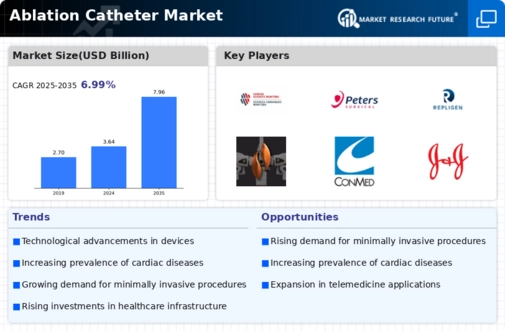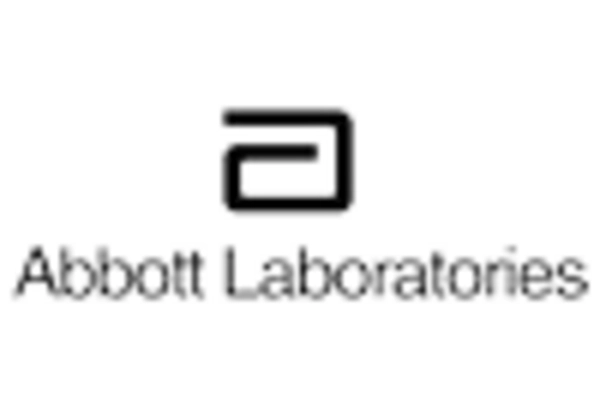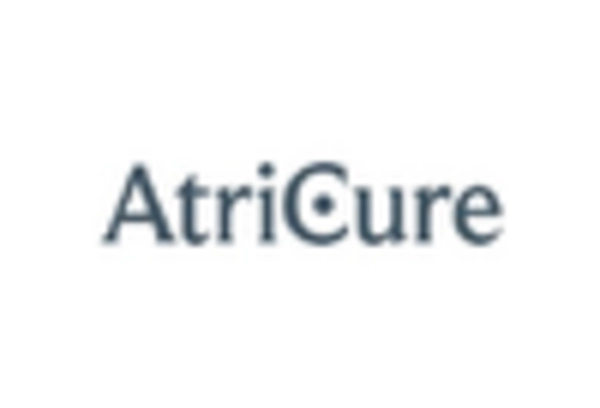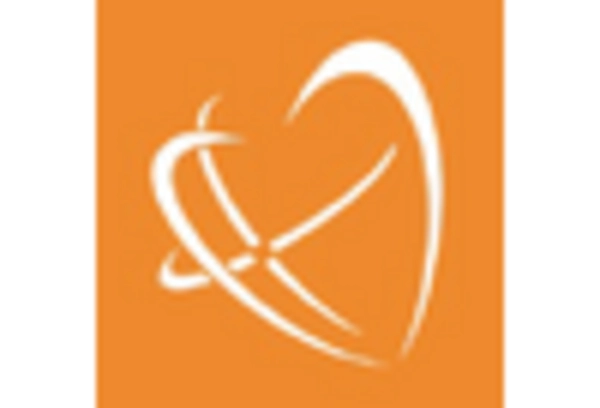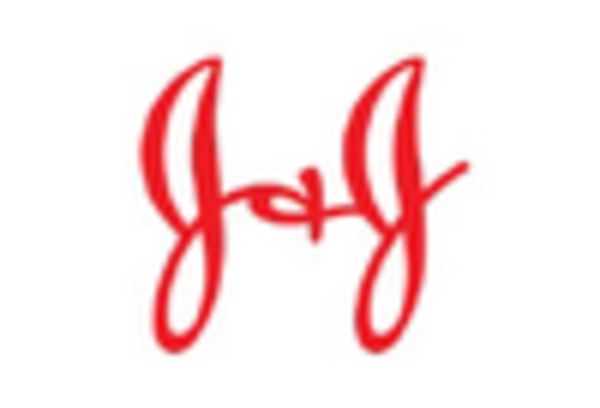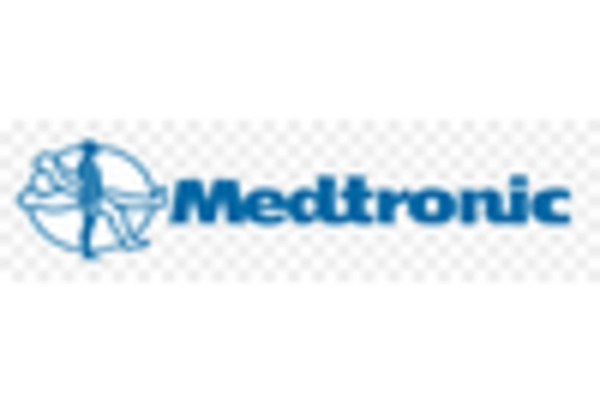Rising Incidence of Cardiac Diseases
The increasing prevalence of cardiac diseases is a primary driver for the Ablation Catheter Market. As cardiovascular conditions continue to rise, the demand for effective treatment options escalates. According to recent data, cardiovascular diseases account for a significant percentage of global mortality rates, prompting healthcare providers to seek advanced solutions. Ablation catheters, known for their efficacy in treating arrhythmias and other heart conditions, are becoming essential tools in cardiac care. This trend is likely to propel the market forward, as hospitals and clinics invest in state-of-the-art ablation technologies to enhance patient outcomes. Furthermore, the aging population, which is more susceptible to heart diseases, contributes to the growing need for ablation procedures, thereby expanding the market's potential.
Technological Innovations in Ablation Catheters
Technological advancements play a crucial role in shaping the Ablation Catheter Market. Innovations such as improved catheter designs, enhanced imaging techniques, and the integration of robotics are revolutionizing the way ablation procedures are performed. For instance, the introduction of contact force-sensing catheters has significantly improved the precision of ablation, leading to better patient outcomes. Market data indicates that the adoption of these advanced technologies is expected to increase, as healthcare providers aim to reduce procedural complications and enhance the effectiveness of treatments. Additionally, the development of multi-electrode catheters allows for simultaneous ablation of multiple sites, further driving the demand for these devices. As technology continues to evolve, it is anticipated that the market will witness a surge in innovative products, catering to the diverse needs of healthcare professionals.
Rising Awareness and Education on Cardiac Health
The growing awareness and education regarding cardiac health are pivotal in driving the Ablation Catheter Market. As public health campaigns and educational initiatives proliferate, individuals are becoming more informed about the risks associated with heart diseases and the available treatment options. This heightened awareness is leading to an increase in early diagnosis and treatment-seeking behavior among patients. Consequently, the demand for ablation procedures is expected to rise, as more individuals seek effective solutions for their cardiac conditions. Market data suggests that regions with active educational programs are experiencing a notable increase in ablation catheter utilization. Furthermore, healthcare providers are increasingly focusing on patient education, which is likely to enhance the acceptance of ablation technologies and contribute to market growth.
Increased Investment in Healthcare Infrastructure
The ongoing investment in healthcare infrastructure is a vital driver for the Ablation Catheter Market. Governments and private entities are allocating substantial resources to enhance healthcare facilities, particularly in developing regions. This investment is aimed at improving access to advanced medical technologies, including ablation catheters. As hospitals upgrade their equipment and expand their service offerings, the demand for innovative ablation solutions is likely to increase. Market data indicates that regions with robust healthcare infrastructure are witnessing a surge in ablation procedures, reflecting the growing acceptance of these technologies. Additionally, the establishment of specialized cardiac centers is expected to further boost the market, as these facilities are more likely to adopt cutting-edge ablation techniques to provide high-quality care to patients.
Growing Preference for Minimally Invasive Procedures
The shift towards minimally invasive procedures is a significant factor influencing the Ablation Catheter Market. Patients increasingly prefer treatments that offer reduced recovery times, less pain, and minimal scarring. Ablation catheters align perfectly with this trend, as they provide effective solutions for various conditions while minimizing the physical impact on patients. Data suggests that the market for minimally invasive surgical techniques is expanding rapidly, with ablation procedures gaining traction among both patients and healthcare providers. This preference is likely to drive the demand for ablation catheters, as they are integral to performing these less invasive interventions. Furthermore, as healthcare systems continue to prioritize patient-centered care, the adoption of ablation technologies is expected to rise, further solidifying their role in modern medical practice.


